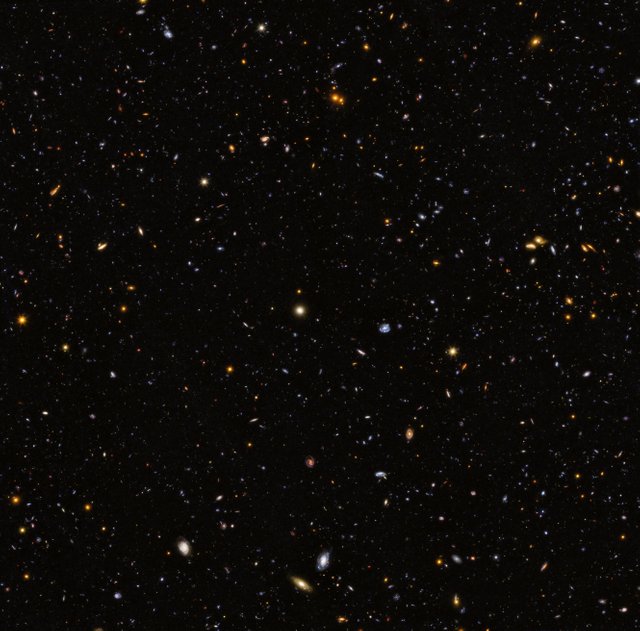Are you ready to have you mind blown?
It looks like a normal whirlpool galaxy with a whole bunch of blue areas or stars but actually it's far more than that.

For those who follow The Hubble space telescopes antics, you may be familiar with the deep field surveys. A deep field survey is where they can peer back in time to the very early universe when galaxies were far closer together.
Here are 12 000 in one photo.

Let that sink in... 12 000 galaxies... from just ones small part of a constellation
Hubble’s ultraviolet vision opens up a new window on the evolving universe, tracking the birth of stars over the last 11 billion years up to the busiest star-forming period in the cosmos, which happened about three billion years after the big bang.
So far, ultraviolet light has been the missing piece of the cosmic puzzle. Now, combined with data in infrared and visible light from Hubble and other space- and ground-based telescopes, astronomers have assembled the most comprehensive portrait yet of the universe’s evolutionary history. The image straddles the gap between the very distant galaxies, which can only be viewed in infrared light, and closer galaxies, which can be seen across different wavelengths. The light from distant star-forming regions in remote galaxies started out as ultraviolet, but the expansion of the universe has shifted the light into infrared wavelengths. By comparing images of star formation in the distant and nearby universe, astronomers can get a better understanding of how nearby galaxies grew from small clumps of hot, young stars long ago.
So the beautiful blue visible in the whirlpool galaxy above is not stars but massive regions of star formation billions of years ago which we now can see the birth of recorded in the different wavelengths of light.
To go through the large format imagery for yourself check out this link
etraordinary science sir,i like it astronomy @gavvet
To listen to the audio version of this article click on the play image.

Brought to you by @tts. If you find it useful please consider upvoting this reply.
deleted
Look at the original pic and other space photos and listen to this music as the background. Thank me later.
I am wondering which of those galaxies has an earth-like environment that can harbor life. It truly is mind-blowing @gavvet
How much more insignificant does it make our little galaxy seem? And to think that there is no end to it! Pretty wild gavvet.
Unfortunately, i do not believe in
At least we have the digital space to store all of these photos, so that when scientists mostly agree with me (its just a matter of time) we can look back on these photos with new eyes.
AAHHHHH!! This deep astronomy stuff always blows my mind. I'm not sure I understand any of it.
So, are we seeing multiple instances of the same stars at different points along the timeline; with the IR spectrum showing us the formation of stars that we've we've already been observing via other EM wavelengths?
(I kind of hope not, because then I'm going to have to ask a bunch more questions.)